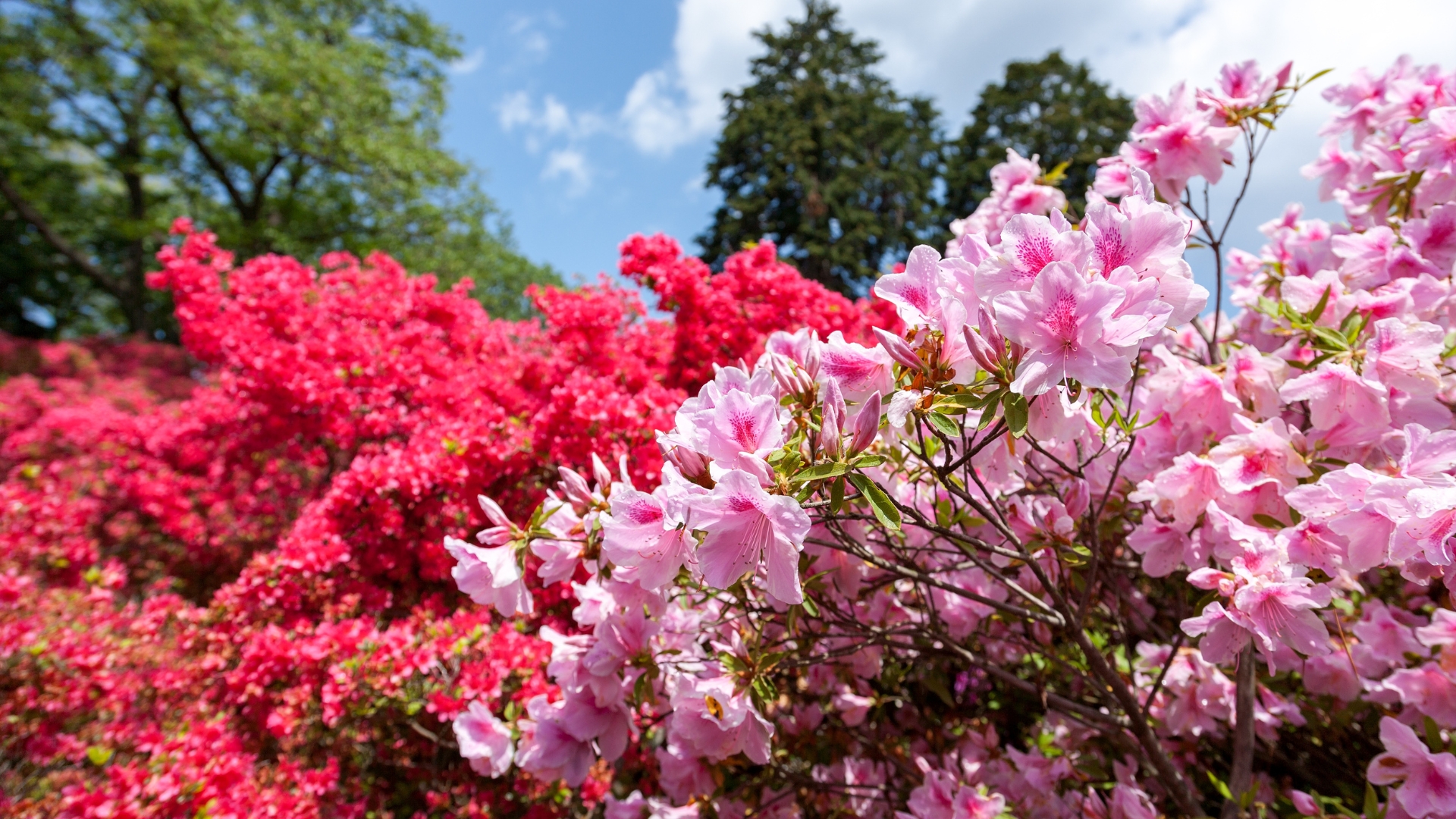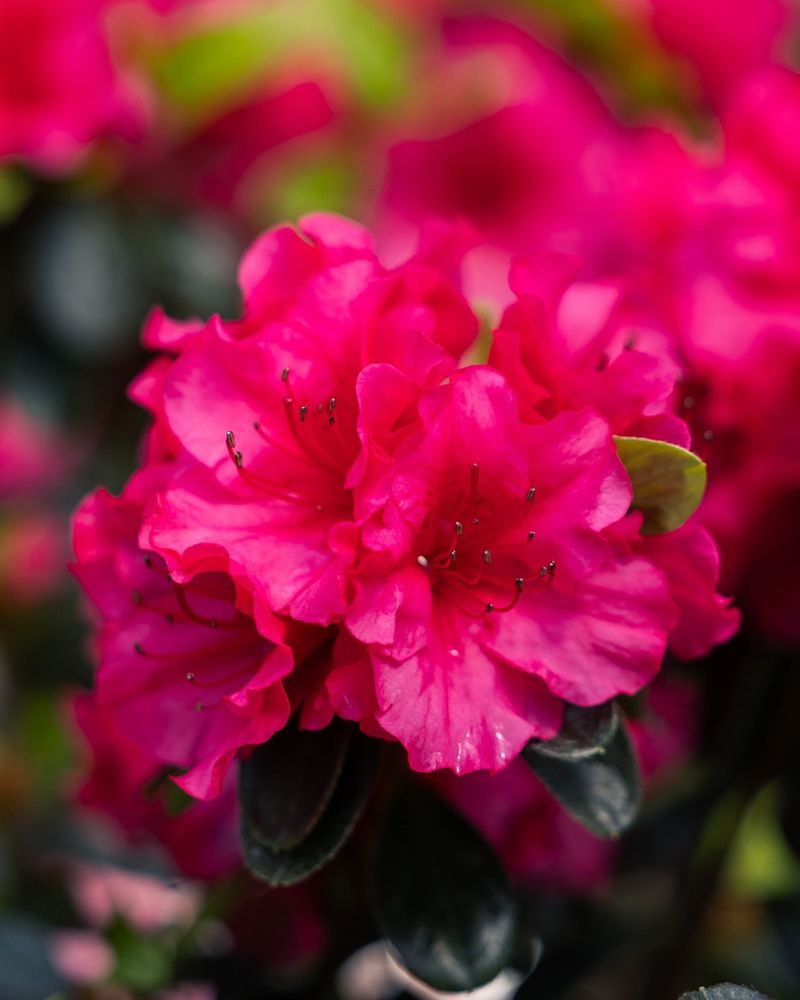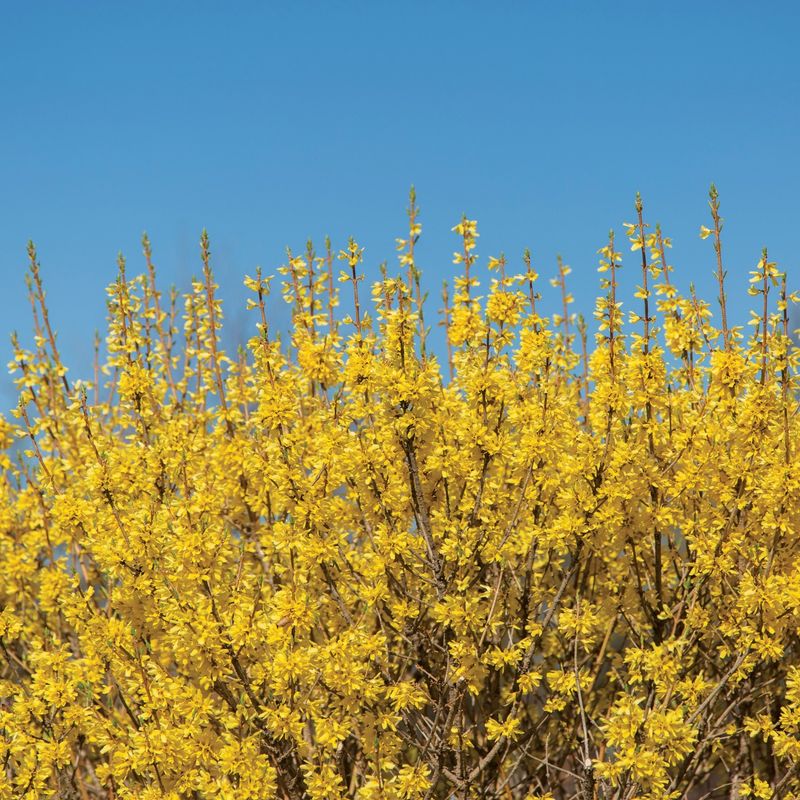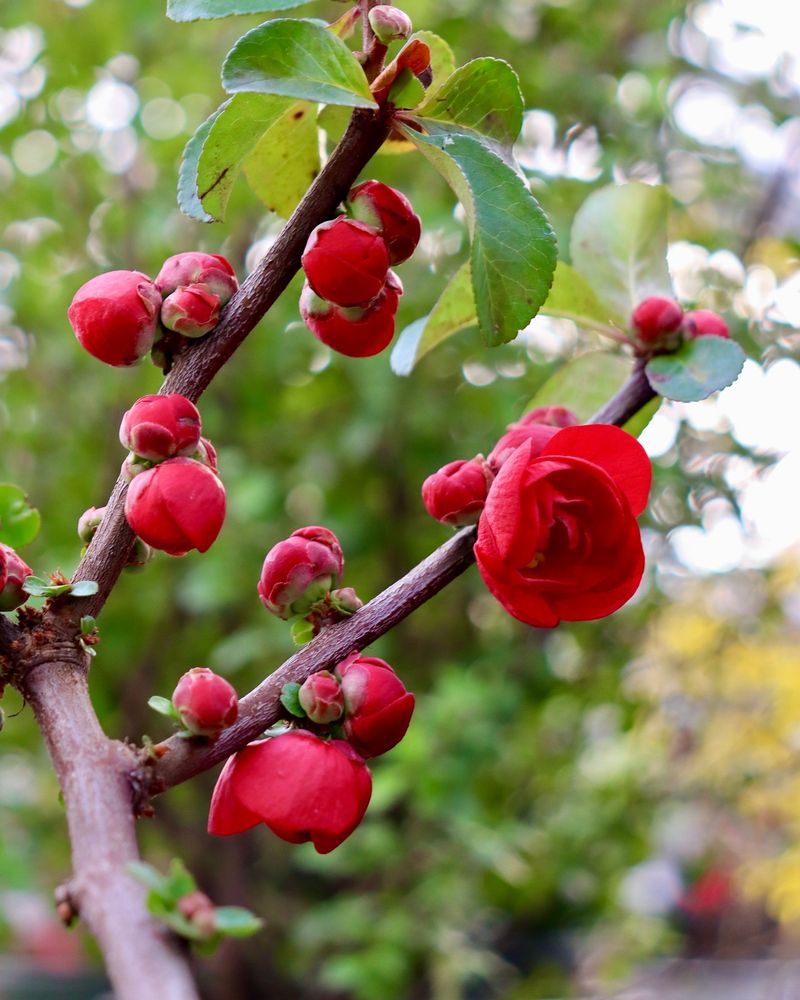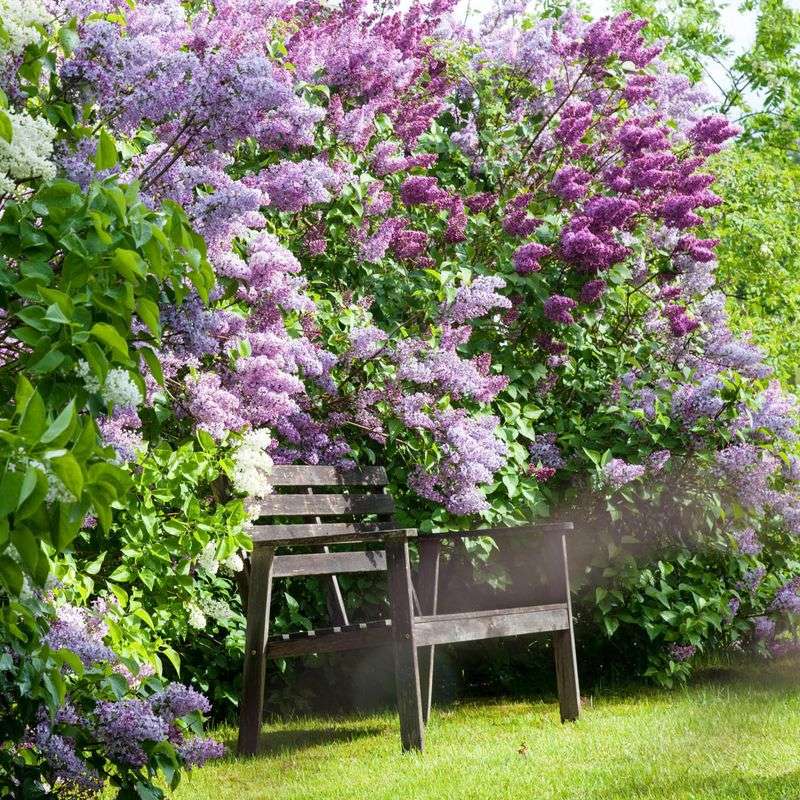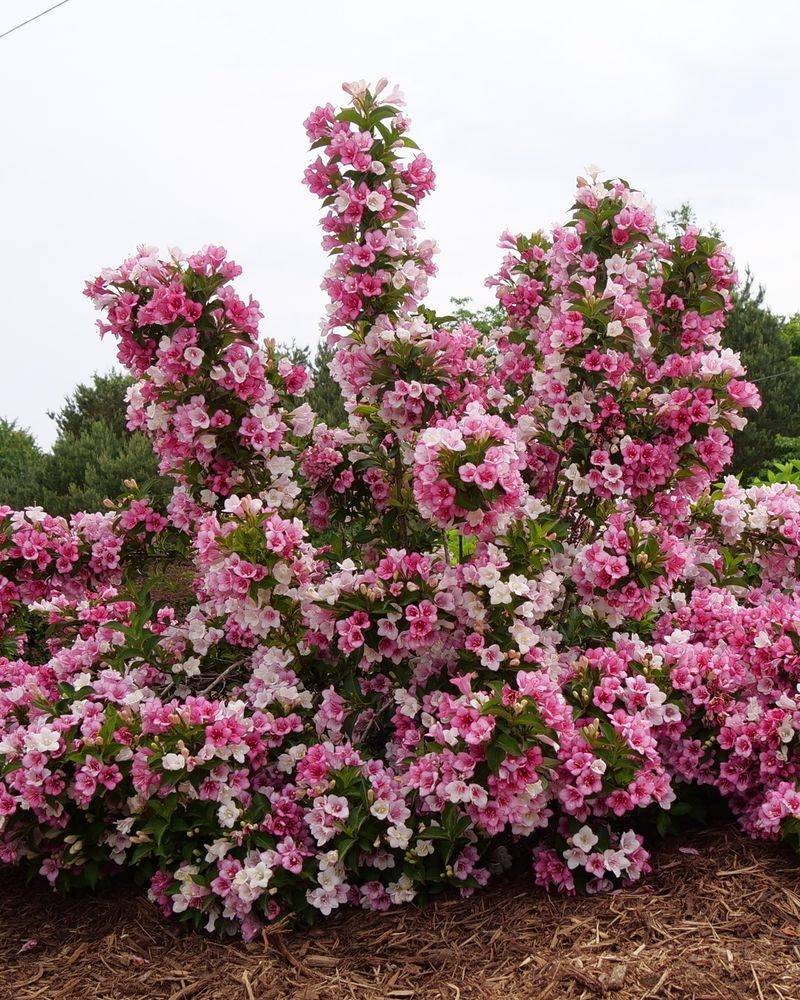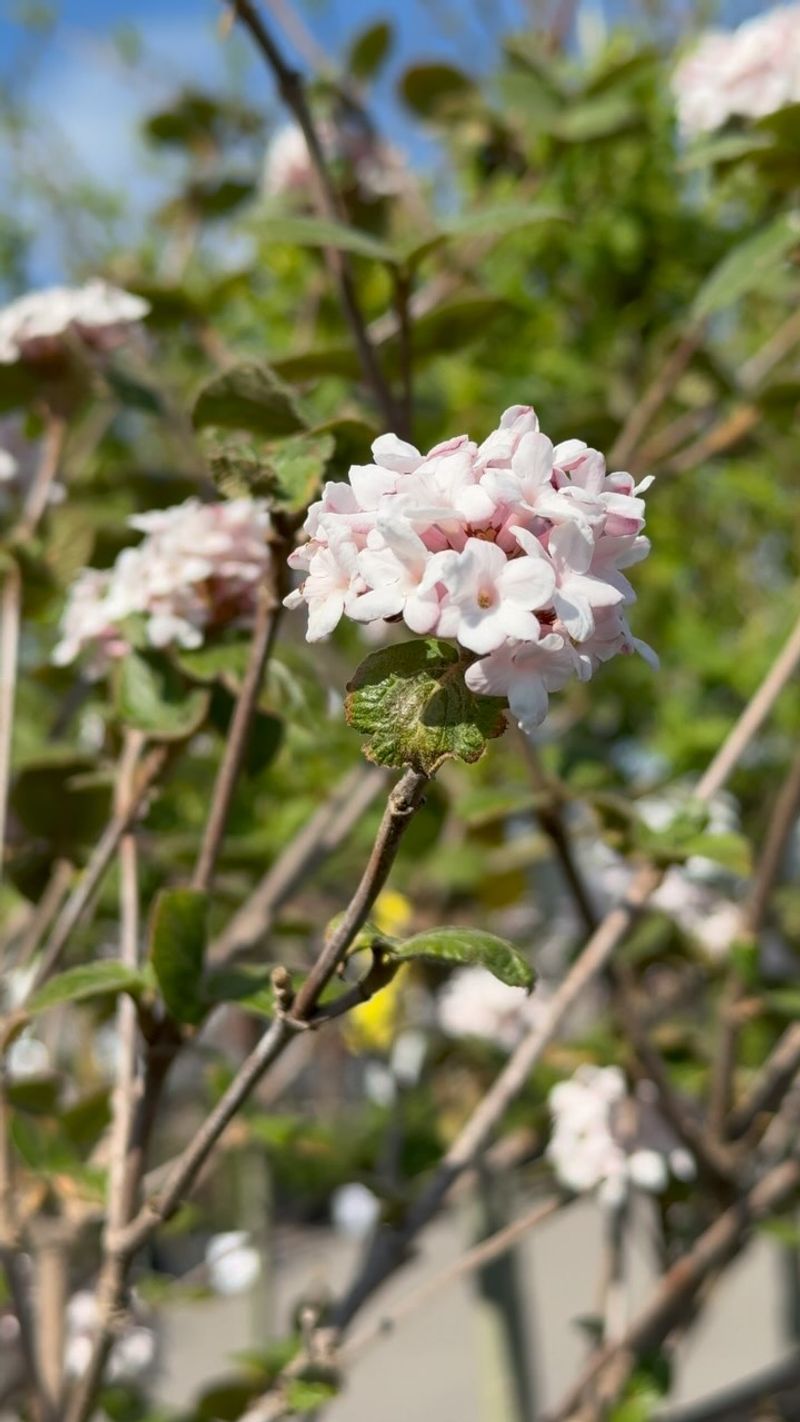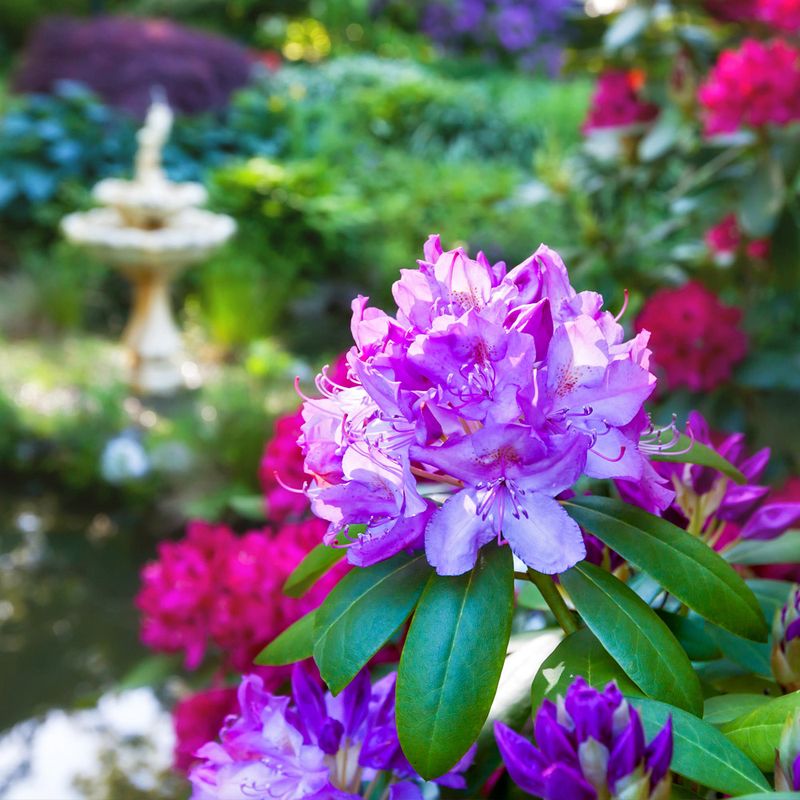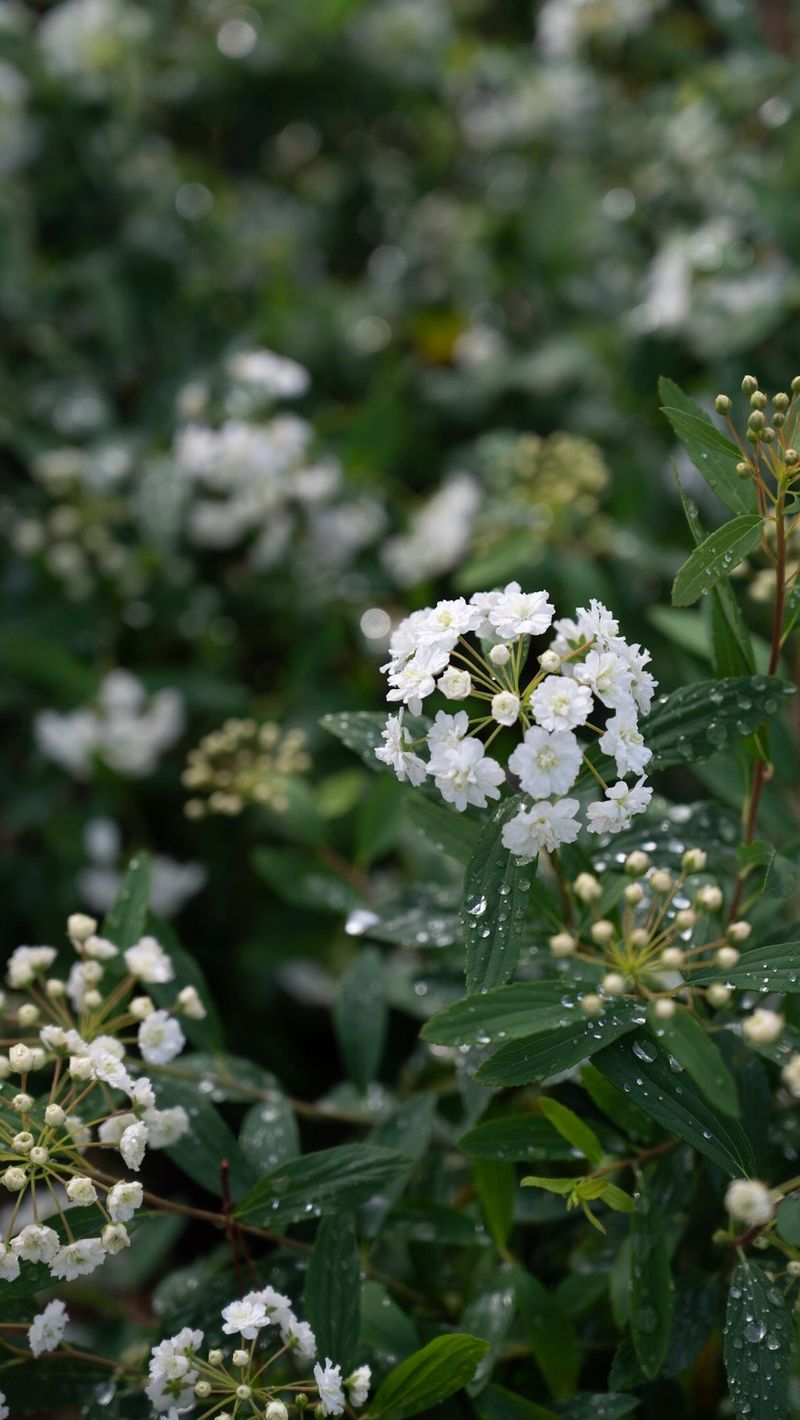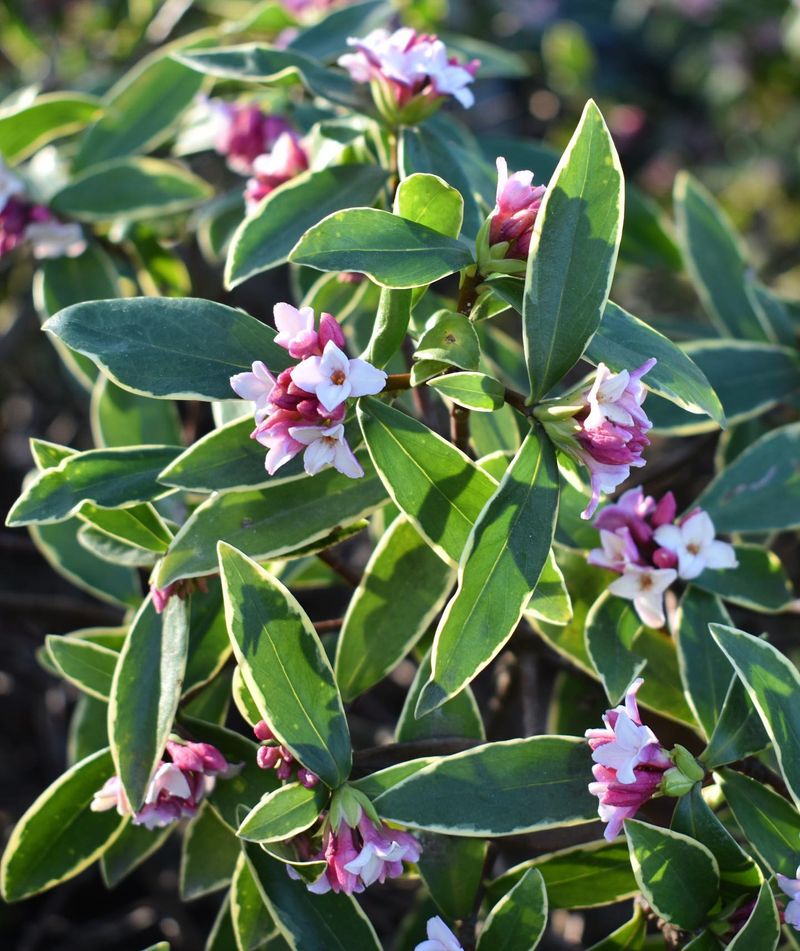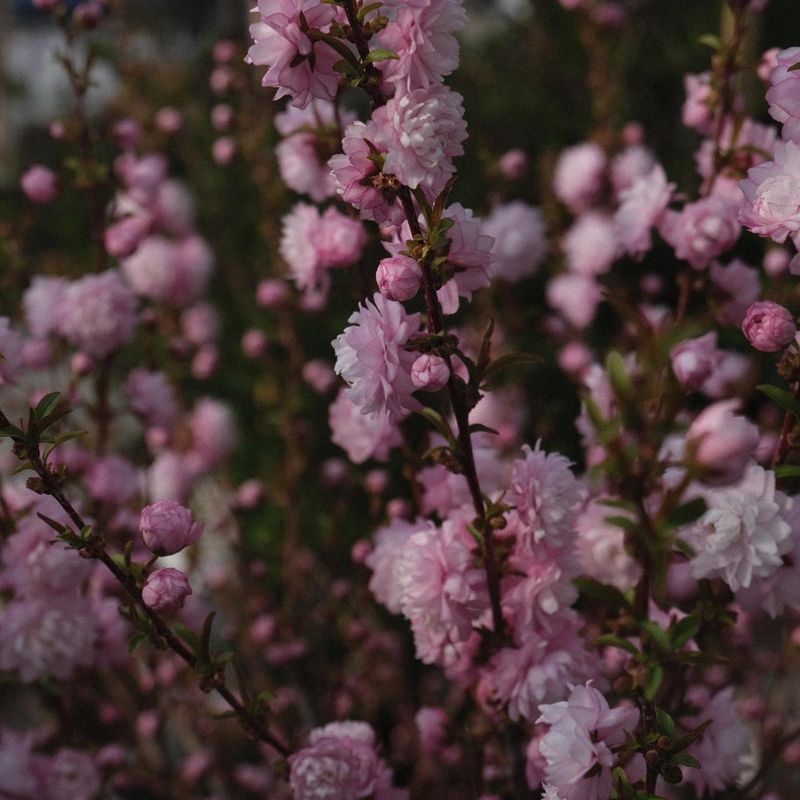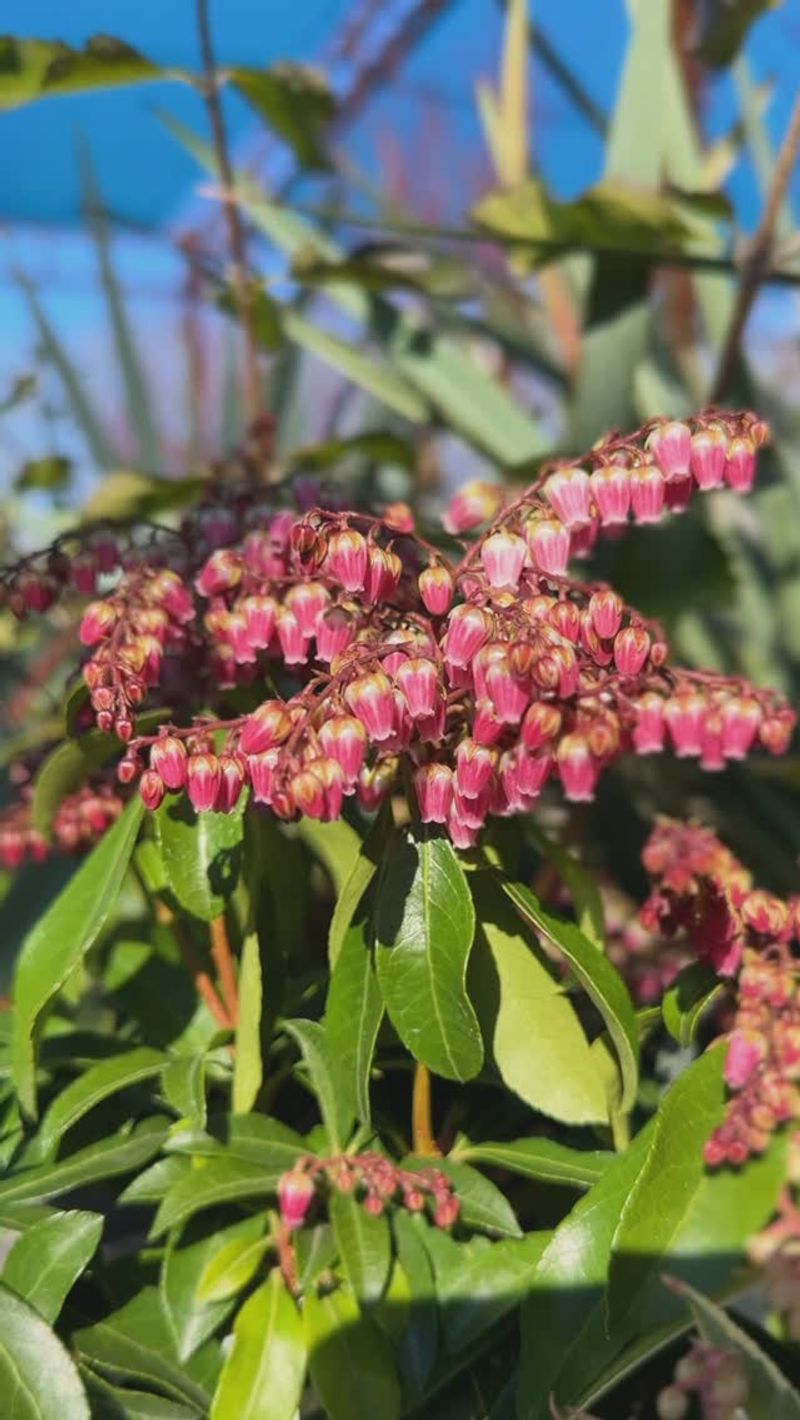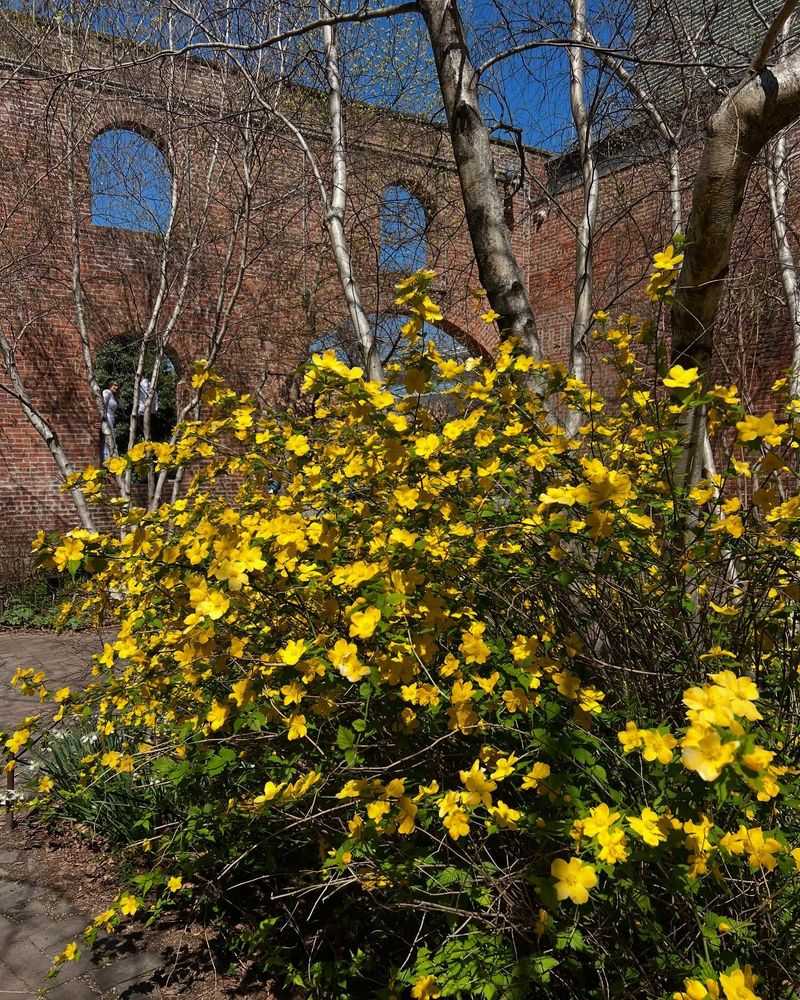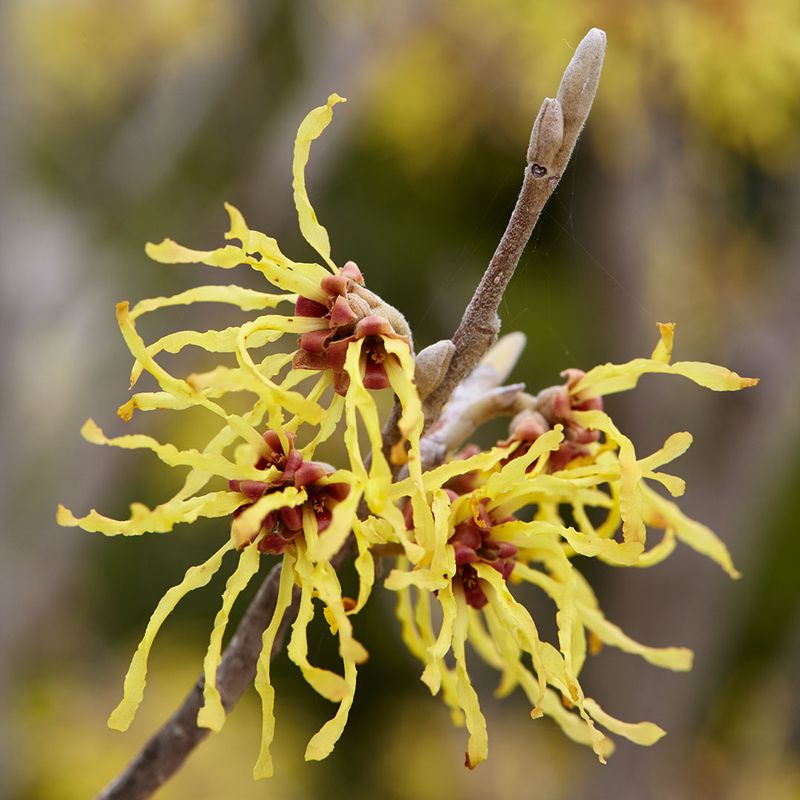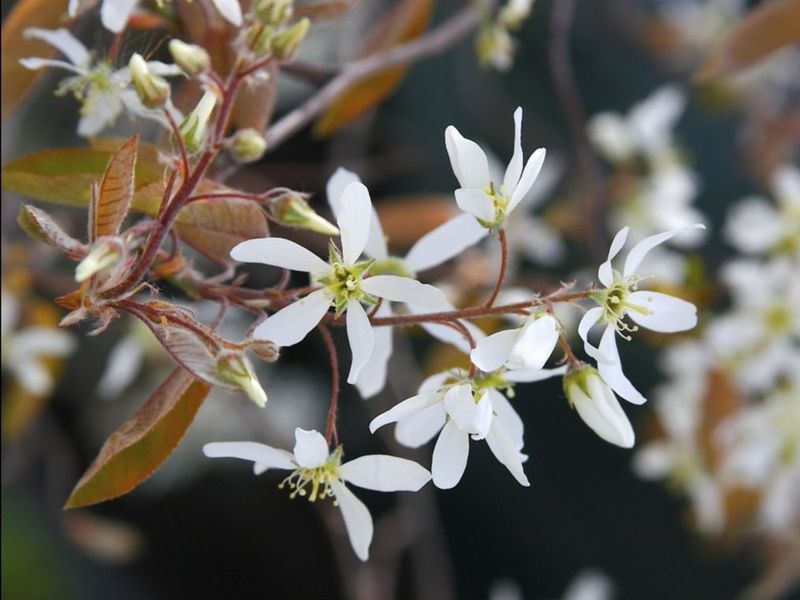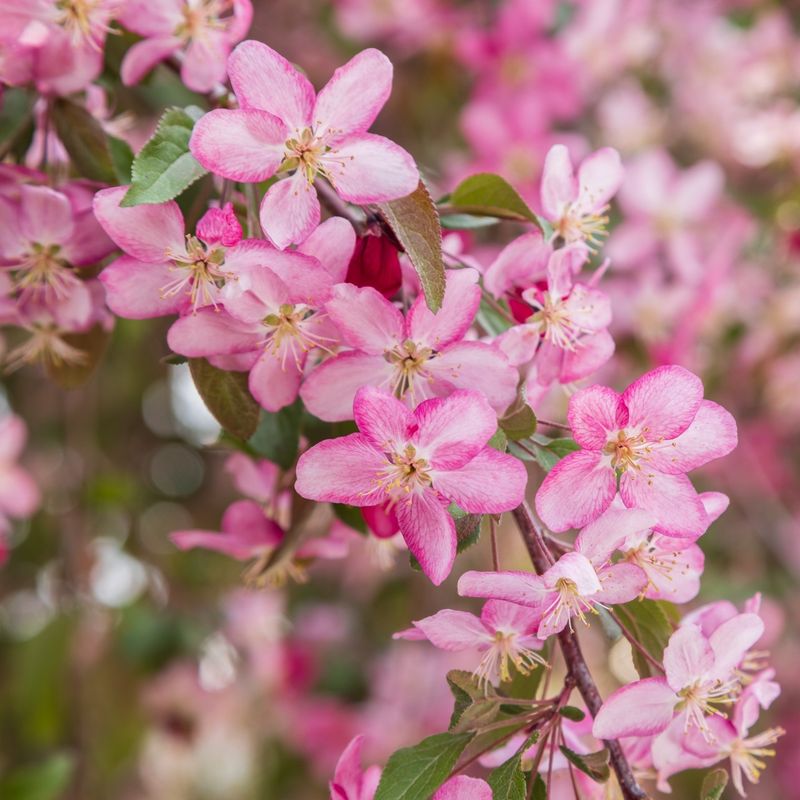Spring is the perfect time to wake up your garden with a burst of color, and these 14 shrubs and bushes will do just that. Each one brings something special—bold blooms, fresh foliage, or long-lasting charm.
They’re not fussy, and many are easy enough for beginners to plant and enjoy right away. Even tricky spots in the yard can benefit from these vibrant picks.
If you’re aiming for a garden that turns heads this season, this list will point you in the right direction.
1. Azalea
Nothing says spring has arrived quite like the explosion of trumpet-shaped blooms covering these compact shrubs. Available in every shade from soft white to fiery red, azaleas create instant impact in partially shaded spots.
These acid-loving plants thrive under trees where other shrubs struggle. With thousands of varieties to choose from, you’ll find options perfect for nearly any climate zone, from cold-hardy Northern Lights series to the heat-tolerant Encore azaleas that rebloom throughout the season.
2. Forsythia
Sunshine yellow flowers appear on bare branches before the leaves even wake up, making forsythia the true herald of spring. These fast-growing shrubs create dramatic arching forms that can reach 8-10 feet tall if left unpruned.
Easy to grow in almost any soil, forsythias need full sun to produce their best show. Many gardeners use them as informal hedges or background plantings. Remember to prune immediately after flowering since next year’s buds form on the current season’s growth.
3. Flowering Quince
Early spring reveals the charm of flowering quince when salmon, scarlet, or pink blossoms appear on thorny branches. This old-fashioned favorite creates a stunning display that looks especially magical against dark evergreen backgrounds.
Growing just 3-6 feet tall, quince fits perfectly in smaller gardens or mixed borders. The fruits that follow the flowers are edible and make excellent jellies. Modern varieties like ‘Double Take’ offer thornless options with double flowers that resemble small roses.
4. Lilac
Fragrance defines the classic lilac, with its intoxicating scent wafting through spring gardens for generations. The cone-shaped flower clusters in lavender, purple, white, or pink create weeks of sensory delight.
Traditional varieties can grow 10-15 feet tall, while dwarf cultivars stay manageable at 4-6 feet. French hybrids offer improved disease resistance and reblooming capabilities. Plant lilacs where you can enjoy their heavenly scent – near windows, patios, or garden seating areas.
5. Weigela
Trumpet-shaped flowers in shades of pink, red, or white cover this easy-care shrub in late spring. Hummingbirds can’t resist the tubular blooms, making weigela a wildlife-friendly choice for any garden.
Modern varieties offer improvements like compact growth, variegated foliage, and repeat blooming. ‘Wine & Roses’ sports dark purple leaves that contrast beautifully with its pink flowers. Most weigelas reach 4-6 feet tall and wide, creating substantial presence without overwhelming smaller spaces.
6. Viburnum
Versatile viburnums offer something for every garden situation, from compact doublefile varieties to taller American cranberrybush types. Many produce fragrant white or pink flower clusters that perfume the entire garden.
Beyond spring flowers, viburnums deliver multi-season interest with colorful berries and outstanding fall foliage. ‘Korean Spice’ viburnum combines intensely fragrant pink-tinged blooms with compact growth perfect for smaller spaces. Most varieties thrive in part shade to full sun with minimal maintenance.
7. Rhododendron
Majestic blooms in nearly every color of the rainbow make rhododendrons garden royalty during spring. Their large, leathery leaves provide year-round structure while setting the stage for spectacular flower trusses.
From compact 2-foot varieties to tree-form types reaching 20 feet, there’s a rhododendron for every garden space. These woodland natives prefer acidic soil and protection from harsh afternoon sun. Mulch with pine needles or bark to maintain soil moisture and acidity.
8. Deutzia
Arching branches become smothered in star-shaped white or pink flowers, creating a fountain effect that’s breathtaking in spring gardens. This underused shrub deserves more attention for its easy-care nature and reliable blooming.
Compact varieties like ‘Nikko’ grow just 2 feet tall, while others reach 6-8 feet. Most deutzias prefer full sun but tolerate light shade in hotter climates. Their fountain-like growth habit works beautifully in cottage gardens or as specimen plants where their graceful form can be appreciated.
9. Spirea
Bridal wreath spirea creates fountains of white flowers along gracefully arching branches in early spring. These tough, adaptable shrubs thrive almost anywhere with minimal care, making them perfect for beginning gardeners.
Beyond the classic white varieties, modern cultivars offer pink or red flowers and colorful foliage. ‘Magic Carpet’ combines rosy-pink blooms with foliage that changes from gold to russet throughout the season. Most spireas grow 3-5 feet tall and respond well to rejuvenation pruning.
10. Daphne
Intensely fragrant flowers make daphne worth every bit of extra care it might require. The sweet perfume from just one shrub can fill an entire garden, making it perfect near patios or entrances.
Winter daphne (Daphne odora) blooms in late winter to early spring with pink-edged white flowers. Most varieties stay compact at 3-4 feet tall and wide. Provide excellent drainage and avoid disturbing the roots once planted. The extraordinary fragrance makes this somewhat finicky plant worth the effort.
11. Flowering Almond
Delicate pink double flowers resembling tiny roses cover the branches of flowering almond before leaves appear. This old-fashioned shrub creates a dreamy, romantic effect in spring gardens.
Growing 3-5 feet tall and wide, flowering almond works beautifully in mixed borders or as a specimen. While not as common as other spring bloomers, its unique flowers make it worth seeking out. Plant in full sun for best flowering, and prune immediately after blooming.
12. Fothergilla
Bottlebrush-like white flowers with a honey scent appear before the leaves in early spring. This native American shrub deserves more attention for its multi-season appeal and wildlife value.
Beyond spring flowers, fothergilla offers spectacular fall color in shades of orange, red, and yellow. Most varieties grow 3-5 feet tall and wide, though dwarf forms stay under 3 feet. Plant in acidic soil with morning sun and afternoon shade for best results.
13. Andromeda
Chains of bell-shaped flowers dangle from evergreen branches, creating a delicate display that belies this shrub’s toughness. Also called lily-of-the-valley shrub, andromeda combines year-round structure with spring charm.
New growth emerges in bronze or red tones, adding to the seasonal interest. Most varieties grow 4-6 feet tall and prefer acidic soil like their rhododendron cousins. ‘Mountain Fire’ offers particularly vibrant new growth while ‘Valley Valentine’ produces rich pink flowers instead of the typical white.
14. Kerria
Golden yellow flowers shine like stars against arching green stems, even in shady spots where few shrubs bloom well. This old-fashioned favorite bounces back from harsh winters with remarkable resilience.
The single-flowered species offers simple elegance, while ‘Pleniflora’ produces double blooms resembling small roses. Growing 4-6 feet tall with a similar spread, kerria forms a graceful fountain shape. Green stems provide winter interest and allow this shrub to photosynthesize even when dormant.
15. Witch Hazel
Spidery flowers in gold, orange, or red appear in late winter to earliest spring, often while snow still covers the ground. These unique blooms make witch hazel a conversation piece in any garden.
Growing 8-15 feet tall depending on variety, witch hazels develop a broad, rounded shape over time. Vernal witch hazel (Hamamelis vernalis) blooms in late winter, while common witch hazel (H. virginiana) flowers in fall. Both offer spectacular yellow fall foliage before their unusual flowering season.
16. Serviceberry
Delicate white star-shaped flowers cover this native shrub just as spring arrives. Also called Juneberry or shadbush, serviceberry bridges the gap between shrubs and small trees with its elegant form.
After flowering, edible purple berries attract birds while providing tasty treats for humans in pies or preserves. Fall brings spectacular orange-red foliage. Most varieties grow 15-25 feet tall but can be maintained at smaller sizes with pruning. Multi-stemmed forms create natural woodland character in garden settings.
17. Crabapple
Spectacular flower display in white, pink, or magenta makes dwarf crabapples outstanding additions to spring gardens. These small tree-form shrubs create focal points that transform with the seasons.
Modern varieties like ‘Sargent’ or ‘Tina’ stay under 8 feet tall, fitting perfectly in smaller gardens. Beyond spring flowers, many produce colorful persistent fruits that feed birds through winter. Disease-resistant selections have solved the pest problems that plagued older varieties, making them nearly maintenance-free.
18. Beauty Bush
Graceful arching branches become laden with bell-shaped pink flowers, creating a fountain of color in late spring. This old-fashioned shrub (Kolkwitzia amabilis) deserves rediscovery for its reliable beauty and easy care.
Growing 6-10 feet tall and wide at maturity, beauty bush makes an excellent background plant or informal hedge. The peeling bark adds winter interest after the flowers and foliage have faded. Give it full sun and well-drained soil for best flowering.

